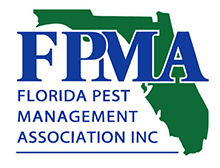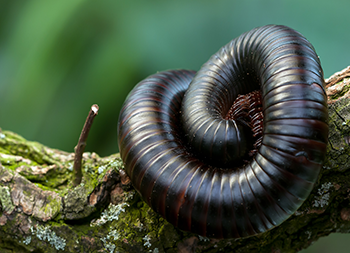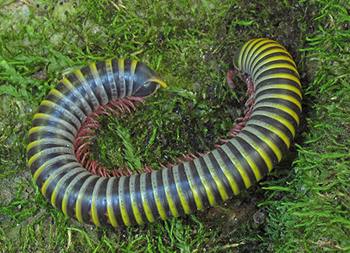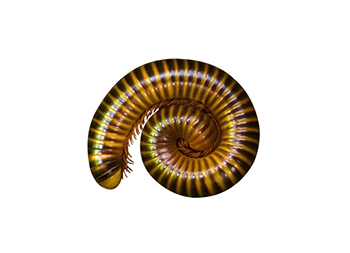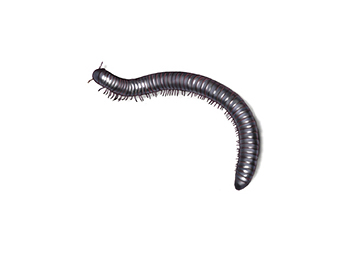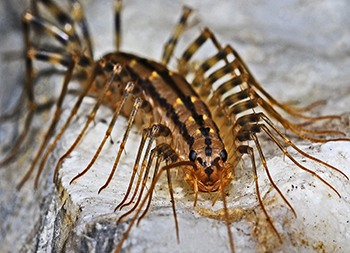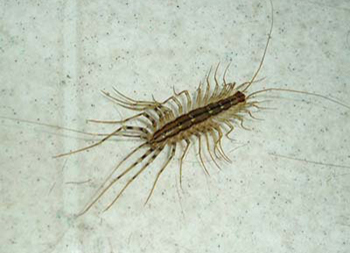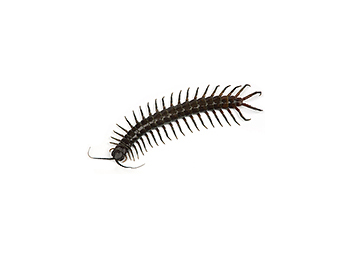Millipedes and Centipedes
Millipedes and centipedes are not insects. They are actually more closely related to lobsters, crayfish and shrimp. However, unlike their marine cousins, millipedes and centipedes are land dwellers. They are typically found in moist habitats or areas with high humidity and are nocturnal. They feed on rotting wood, leaves, and damp, decaying plant matter, and will live nearby or within these same materials or other organic matter and under mulch and rocks.
Millipedes
Common North American millipedes are brownish in color with 2 to 4 pairs of legs per body segment. Its legs move in an undulating wave-like manner.
Crawlspaces are excellent millipede habitats. In the fall, they can become a nuisance because they migrate away from feeding areas and invade homes. Because they crawl along the ground, they are usually found in lower floors and basements.
Millipedes are not poisonous, but many species have glands capable of producing irritating fluids that may cause allergic reactions in some individuals. The defensive sprays of some millipedes contain hydrochloric acid that can chemically burn the skin and cause long-term skin discoloration. The fluid can also be dangerous to the eyes. It is not advisable to handle millipedes with your bare hands.
The Florida millipede is cylindrical in shape, like all of this family, with a pale underside and transverse striped pattern of red, black and pale color. They inhabit the entire Florida peninsula, north to South Carolina and east to Alabama.
Centipedes
Centipedes are long, slender creatures with only 1 pair of legs per body segment.
Most centipede species feed on small creatures such as insects. They catch their prey with their powerful jaws and then kill it by injecting it with venom. Occasionally, humans may be bitten by centipedes, but the poison usually only produces a moderate reaction similar to a bee sting. People who are allergic to insect venoms and other toxins may suffer severe reactions to centipede venom. Most centipede bites are uncomplicated and self-limiting.
Pervention measures include moving woodpiles and compost piles as far from the home as possible as well as clearing away any and all dead and and decaying plant matter including leaves and brush.
It should be noted that excessive moisture will provide habitat for a wide range of household pests and can be indicative of a structural or functional problem in a home. Gutters should be kept in good repair.
Continuous, Long-Term Protection for Your Home - And Your Peace of Mind
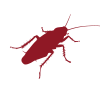
Pest Control Services
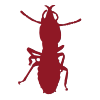
Termite Treatment
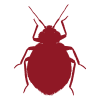
Bed Bug Treatment
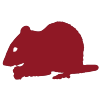
Rodent Control
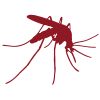
Mosquito Control
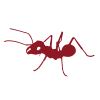
Ant Control
WHAT WE CAN DO FOR YOU
- Personalized excellent "live" customer service.
- Minimize your pest problem for good.
- Increase the value to your business.
- We are State Licensed. Bonded & Insured - saves you money
- We are a local, family-owned business with a wide range of experience devoted to sustainable environmental health
- Monthly, quarterly, yearly special services as needed
PEST CONTROL SERVICES INCLUDE
- Identification and treatment for the existing pest problem We will visit your home to determine the extent of your current pest infestation and locally treat infested areas.
- Perimeter treatment On our first visit, we will perform interior and exterior perimeter treatments to prevent further infestation.
- Quarterly treatment thereafter, we service your home every 3 months including an exterior perimeter treatment.
- Customized services available including monthly and yearly treatments.
WHO WE ARE
Shumaker's Pest Control is a family-owned company utilizing the best practices in the industry and exceeding each of our client’s expectations by providing exceptional quality and personal service.
We would welcome the opportunity to earn your trust and deliver you the best service Shumaker's Pest Control has to offer.
PROFESSIONAL ASSOCIATIONS

